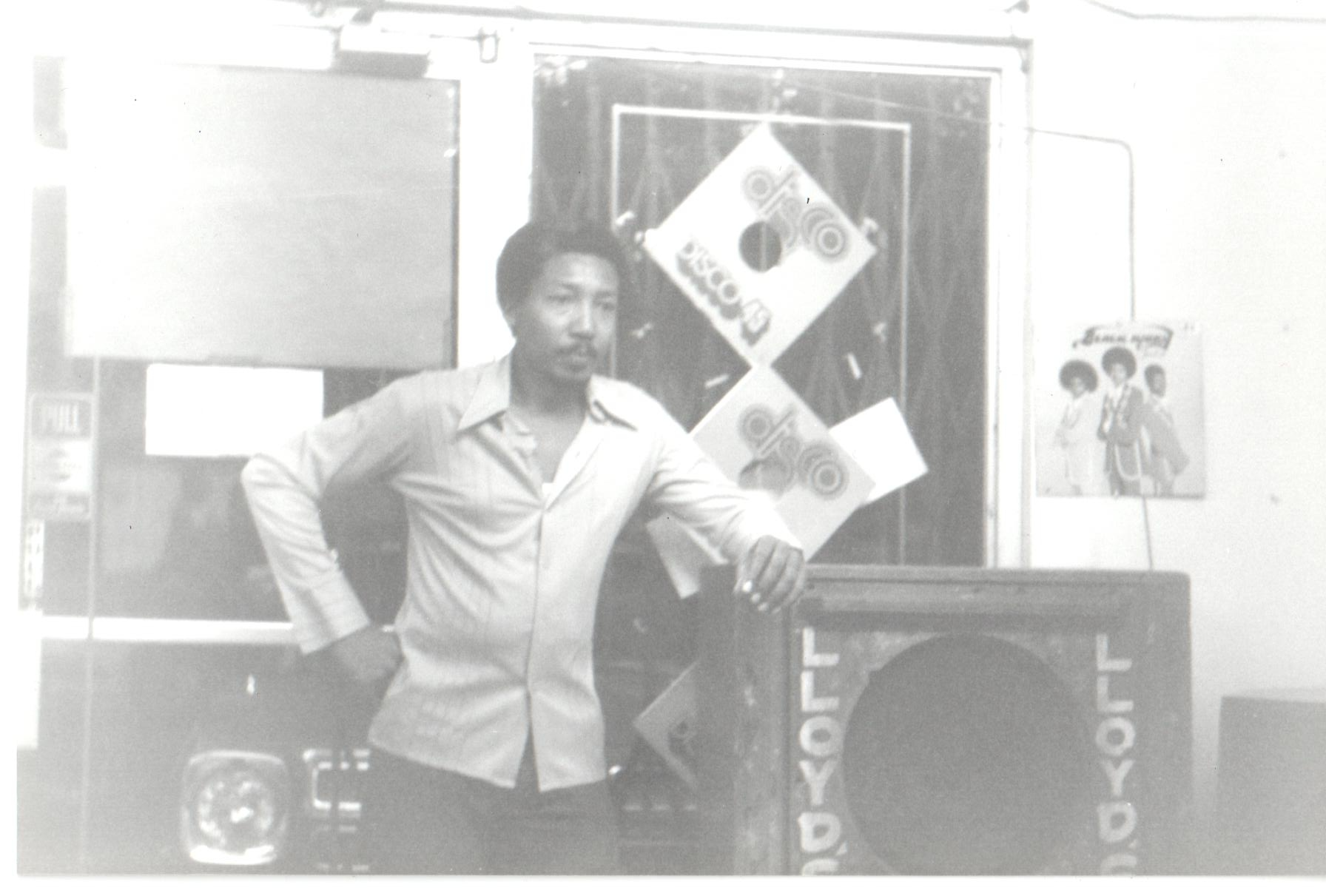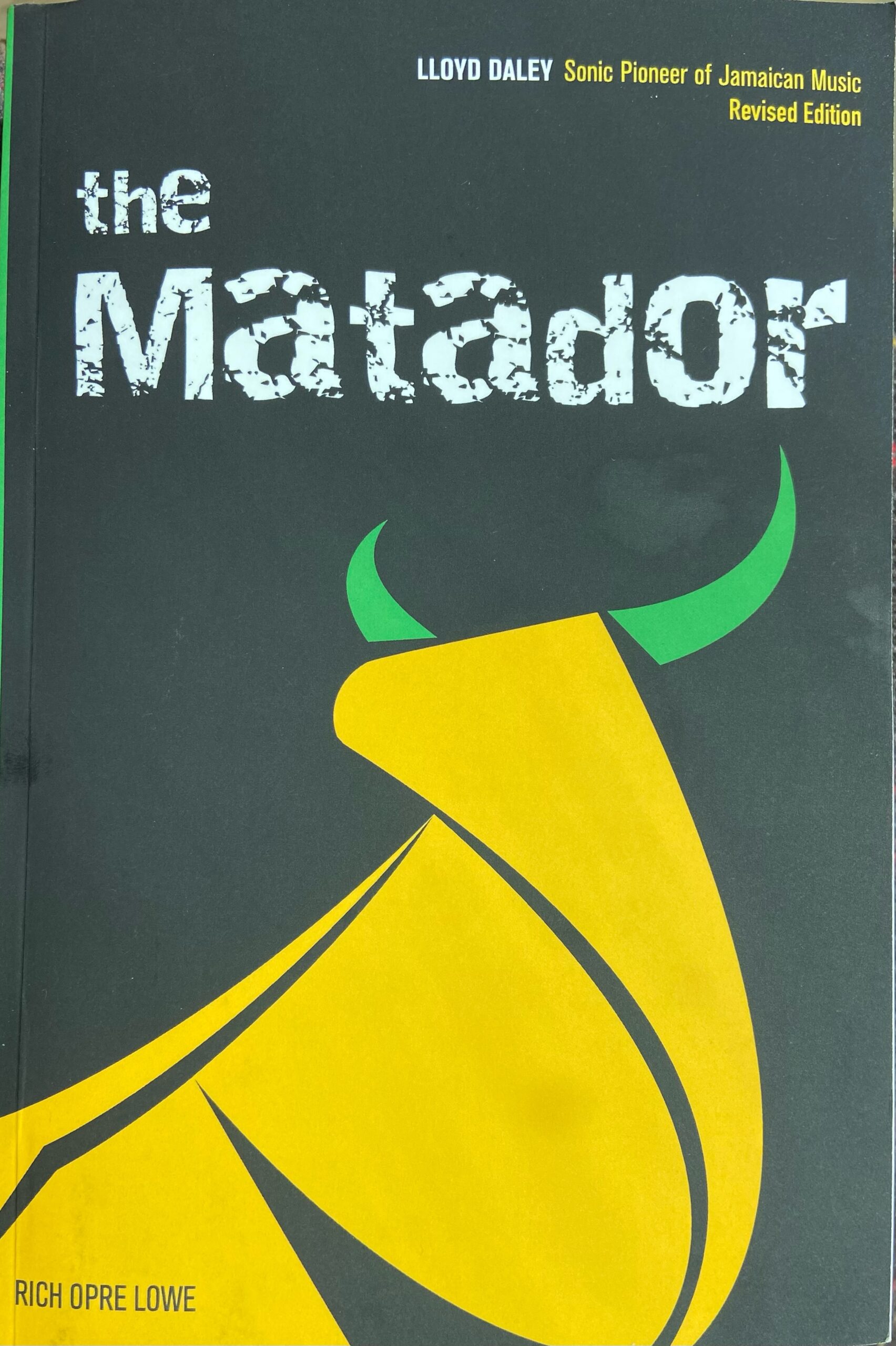Tubby and The Matador (Book Extract)
Reggae and dancehall culture have long attracted the attention of scholars, researchers, and curators, giving rise to a rich field of study where diverse approaches intersect (see the SST selected bibliography on reggae sound system culture from JA to the UK). However, reggae literature tends to focus on artists, music producers, record labels and so on, while theoretical perspectives usually engage with issues of identity formation and cultural transmission within Jamaica’s postcolonial society.
Despite widespread recognition of the sound system’s significance in Jamaica’s astonishing music evolution, a lack of extensive documentation and sustained theoretical engagement with this key technological infrastructure persists. Even its more narrative aspects, such the biographies of sound system pioneers and key figures, remain largely unwritten.
A notable exception can be found in the recent publications by Rich Opre Lowe, “The Matador, Lloyd Daley. Sonic Pioneer of Jamaican Music” and “Two Kings. King Edwards the Giant Sound System”. These volumes delve deeply into the technical and cultural intricacies of Jamaica’s early sonic landscape, offering rare insight into its foundational figures. Today we are glad to present our readers with an extract from “The Matador”, in which Lowe explores Mr Daley’s relationship with the celebrated dub genius King Tubby.
Documenting “The Matador”
Lloyd Daley is a Jamaican electronics engineer and music producer who died in 2018. He fashioned his nickname of “The Matador” from an image in his mind, where he saw himself alone in a ring, fighting a deadly bull, with thousands of onlookers. Having worked closely with Mr. Daley on The Matador book, I believe he internalized this as his outlook on life. Mr. Daley was feisty and secretive. One of Daley’s singers, Jaiq Sterling, explained the perspective
“He liked [our song] “Bad Minded People” [sings song]: “No matter what you do, you can’t stop me again. People. Bad minded people.” That’s the type of song I know he would like. He liked this type of song that shows that he’s on a pedestal, and people are trying to get at him, and he’s backing them off.”
Sterling’s fitting appraisal reinforces the matador persona.

Mr Lloyd Daley (Image © John Etienne Williams)
Tubby and The Matador (extract from Chapter Eleven)
Given Mr. Daley’s proficiency in sound system design and construction, people sought out his technical advice. For example, King Tubby (Osbourne Ruddock, or “Tubbs” as Mr. Daley would call him) used to seek out Mr. Daley for his expertise, and Mr. Daley recalls the “Alvaranga” dance, at which the emerging sound system owner needed The Matador’s assistance to correct a reverb issue:
Tubbs had a big problem with his reverb making more noise than echo. I was playing for the Rastas that night, and Tubby came to me while I was sitting on a coffin in the dance hall. They had actual coffins stored there because it was near Brown’s Funeral Parlor! After Tubbs told me of his problem, I drew a schematic for a reverb and gave it to him. He told me the next week how much it helped him. In those earlier days Tubbs was just starting out with a small sound. It was around 1966–68 that Tubbs’ Sound was being noticed. He would soon compete against Jackie of Jackie’s Hi-Fi and others. As Tubby’s sound grew, Duke Reid gave Tubbs his tapes to make money by cutting dubs for people and to fight against us three: Prince Buster, Bells, and my sound—The Matador. Tubby made a killing from the instrumental dubs and referenced a mythical process of “extracting the voice out of the music.” Tubbs made exclusive two-track stereo dubs for himself—when in truth, he was mixing or switching between tracks. He did this for some time until he bought a cutting machine and more equipment, like the parametric equalizer from Byron Lee, when Byron wanted to get rid of them. At that time, Byron was putting in new equipment in Dynamic Sounds Recording Studio.
A parametric equalizer is a multiband variable equalizer, which can control the three primary parameters of amplitude, center frequency, and bandwidth. It can shift the sound and widen it. This equalizer was used in “Yim Mas Gan” versions to augment the drum, bass, and horns, but it can’t take voice out of a recording. This was happening during the period when U-Roy was rising with his toasting. U-Roy and Tubby worked together and fooled the people for a long time with this fictional process of extracting the voice out of the music. This elevated Tubby, who could do all these things, like a great magician.
With The Matador amplifier, Prince Jackie’s Hi-Fi could draw in a crowd from miles away. One summer night, Prince Jackie’s Hi-Fi was unleashing his power, and a curious King Tubby came over to see what amplifier and speaker boxes could deliver such a tremendous sound. Owner Jackie Robinson describes the interaction when King Tubby walked over to inquire about the sound:
With King Tubby, we were playing one night with the six KT amplifier. Tubby hear the sound y’know. The man wonder where the sound come from. When them come ‘cross and see it a six KT, them couldn’t believe a six KT a play so. Tubby a big sound—ten KT, twelve KT, or 807, them double-decker ‘ting, whatever them have. Couldn’t believe my lickle six KT a play that way and match them. We were a distance away from each other. The sound a register and the residents a go out. Tubby talk to mi selector Bunny Nicholson. He was amazed to know that with a six KT88 it was playing that way.
While writing this book, Mr. Daley would listen to and supply feedback on the interviews that I conducted with Robbie Lyn, Michael Copeland, Cleveland Browne, and Dennis Brown. After listening to Jackie Robinson commentary about his six KT amplifier, The Matador responds to Jackie’s assessment:
What he said about his six KT88 amplifier is true. The only other amplifier that I built that could challenge that six KT88 at that time was Sir Percy Sound owned by Mr. Tibby. Mr. Tibby was already in his late seventies in 1964. That amplifier was the one that both U-Roy and Sir Percy’s DJ—Whitey, used to toast on. Whitey was a very good DJ. I am very proud of this amplifier because it dropped a heavy bass with good resonance. This was actually much heavier than Prince Jackie’s. He almost dropped me the first night we played together in the same dance. This amplifier I built for him had a real round bass. On this night, Sir Percy “The Welterweight” gave me a hard fight with that amplifier that I had built for him. We were both playing in the same dance hall. I had to go into over-drive with my more powerful amplifiers to defeat him.
In another instance, Matador and Tubby’s electronics work came into play with The House of Leo. Mrs. Lee was the owner of the House of Leo nightclub on Cargill Avenue by Half Way Tree Road. Daley describes the interaction:
In the early 1960s, Mrs. Lee brought her husband Mr. Lee, to me at James Street, where I was living at that time. They had an amplifier Tubby had built for him. The Lee’s sound was called Lord Kelly’s and was located in the Waterhouse area at the time. Lee wanted me to repair and eliminate the distortion it had, which I did so easily. They came to me because even though Tubbs had built it, he couldn’t fix the distortion. I completed repairs under similar circumstances for both Joe Chin of Unitone Sound from St. Mary, Jamaica, and Jack Ruby Sound, where Tubbs had built amplifiers which had distortion. That is why they gave me the job because they needed a new amplifier. In the early days Tubbs was good at winding transformers and doing repairs, but his brother “Stagga” was a genius.
Mr. Daley expressed opinions about King Tubby that can be biting, but they are based on his experiences and independent perspective. Indeed, Tubby’s use of equipment has, at times, been exaggerated, and he was not singularly responsible for the development of dub music. Tubby’s younger brother Leslie “Stagga” Ruddock, a.k.a. “Young Tubby,” has gradually been recognized for his electronics skill—having built amplifiers for top sound systems and created dub productions in Brooklyn, New York, as early as 1970. Mr. Daley described King Tubby as a great magician, and for the listening audience, the magic in the music is just what King Tubby delivered. In Kingston, Jamaica, little equipment was available in the 1970s, but by using the equipment and technology already in his possession, King Tubby was able to emerge with new and innovative sound techniques. He created crashing effects that he referred to as “thunderclaps” with a spring reverb device and exploited tinny treble via a high-pass filter (HPF) he had on a Music Center Incorporated (MCI) mixing desk that he bought used from Dynamic Sounds Recording Studio. Together with rousing timing, Tubby would manipulate the actuator knob, called a potentiometer, to harness the HPF effects. Quite creatively, Tubby generated trailing atmospheric reverberation within a song and then matched another stream of prolonged resonance, bar-for-bar, within the music. King Tubby was brilliant and magical—in a sense, he was supernatural.

“The Matador” book cover, 2020
About the Author
Rich Lowe is an author, radio broadcaster, and magazine publisher, currently focused on research and writing projects. He is the author of The Matador, Lloyd Daley. Sonic Pioneer of Jamaican Music (2020) and Two Kings. King Edwards the Giant Sound System (2023).
